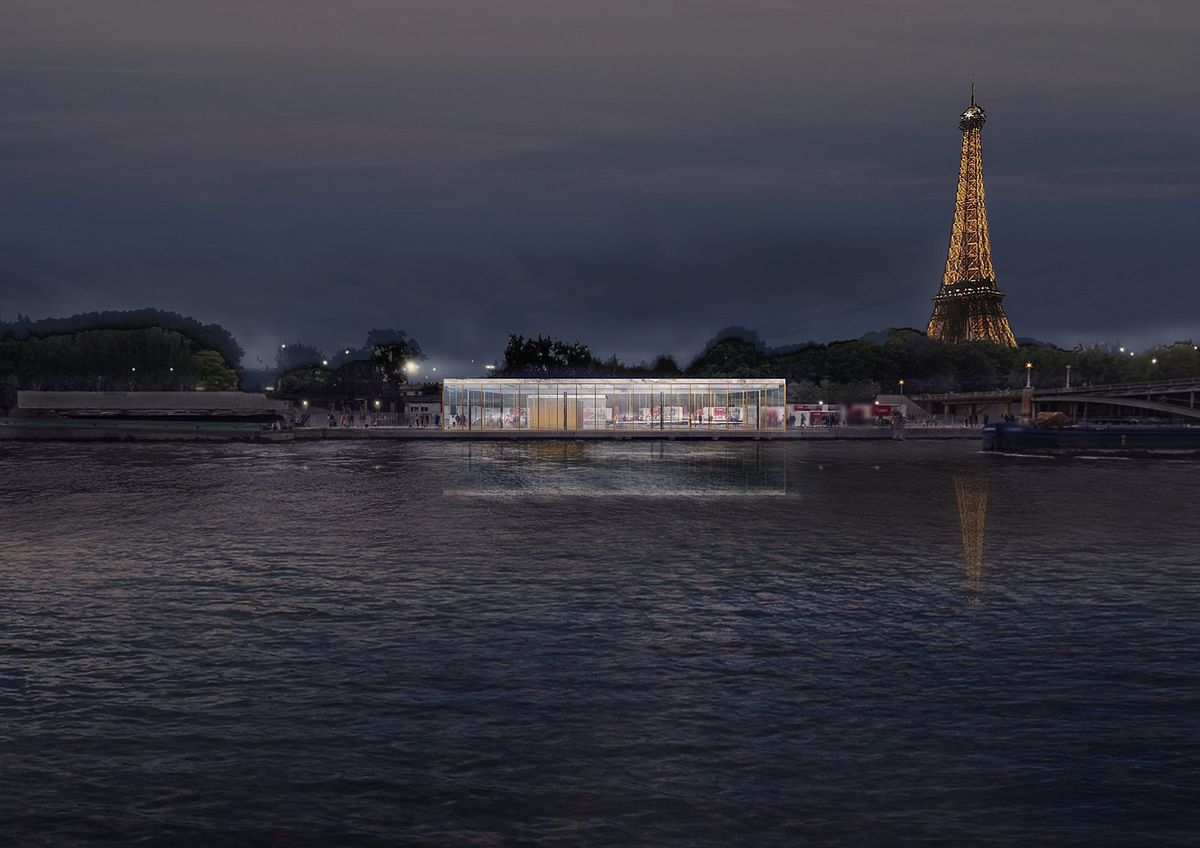
Architects envision a riverside restaurant along the Seine in Paris
By Justine Testado|
Tuesday, Nov 21, 2017
Related
In the Paris Riverside Restaurant competition, architects around the world sent their most creative ideas for an iconic restaurant destination along Paris' infamous River Seine. Organized by archasm, the competition attracted 216 registrations and a competitive pool of entries.
The competition concluded with three prize-winning teams and 10 honorable mentions. Have a look at the prize-winning entries below.
1st place: “10 CM Restaurant” by Min Cui, Teng Xing (China)
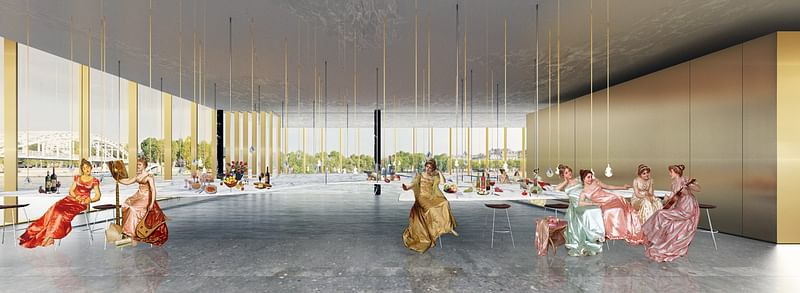
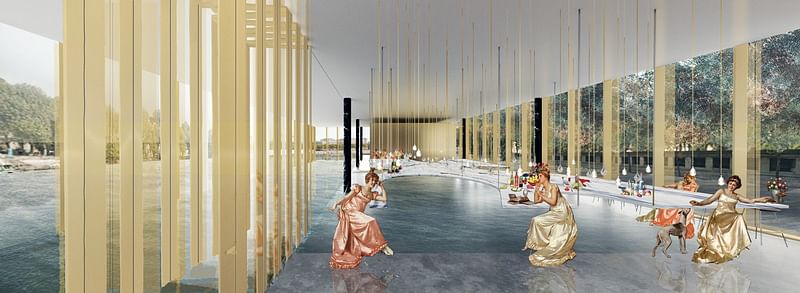
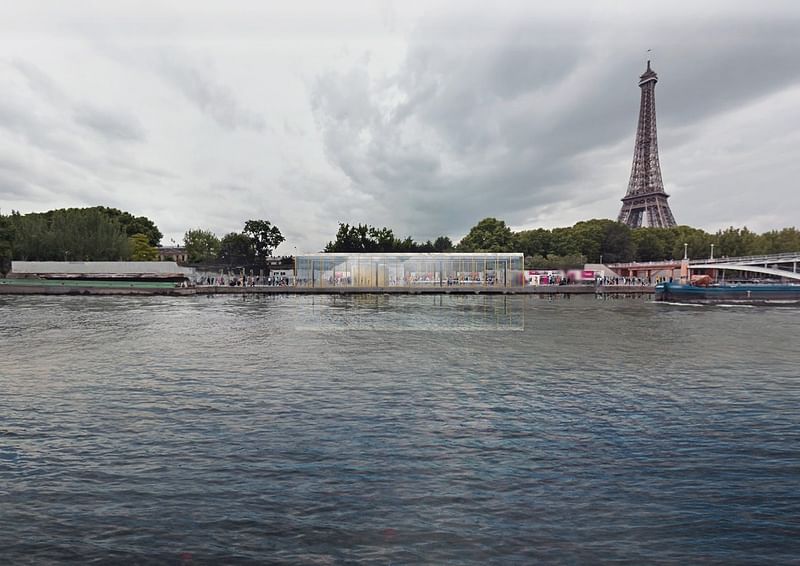
Project description: “Memory: 10cm restaurant is a rethinking of relationship between human, dining table & water. The topic of competition is not only about a restaurant, and not even only about architecture, it should be something broader, which will relate to the culture of city, also related to Teng’s experience in Paris. When Teng was in Paris for internship, he was impressed by the flood of Seine. The urban fabric totally changed during flooding period, streets under flooding line disappeared. We started to think about how to take advantage of flooding and inverted the flooding from a nightmare into a festival that we can celebrate.
Dining on Boat: The restaurants on the boat also inspired us to redefine the idea of eating with the water, by the water. In this special architecture prototype, the relationship between restaurant and water become more intimate than any other building types by the water. Perhaps, we can achieve similar goal with a permanent building.
Approach: The building cantilevers on the boundary between ground and Seine, in this way, we could bring the water in, let it become the part of building.Water plays the landscape role in most cases, however in one special moment it could the architectural element of building, which is slab. The way we achieve this moment is by dropping the cantilevered curtain wall by 10 cm. The introduction of sliding doors and up swing doors also emphasize our idea of bringing nature into our restaurant.
Table We also designed a special table, that guests can interact with the plan of it. In most cases, people can sit along the whole parameter of table, again when water comes in, guests will and can only sit on the rectangular edges of table, maybe dip the feet into water during dining, so the dining table become an element by which people can interact with nature. To achieve this we suspend the whole piece of table to avoid any interference with ground. Furthermore, the waves reflect on the ceiling, also becomes part of dining experience.”
2nd place: “Lettuce-Go-Round” by Tony Ip, Cheuk Ming Cheung, Lap Shing Sy (Hong Kong)
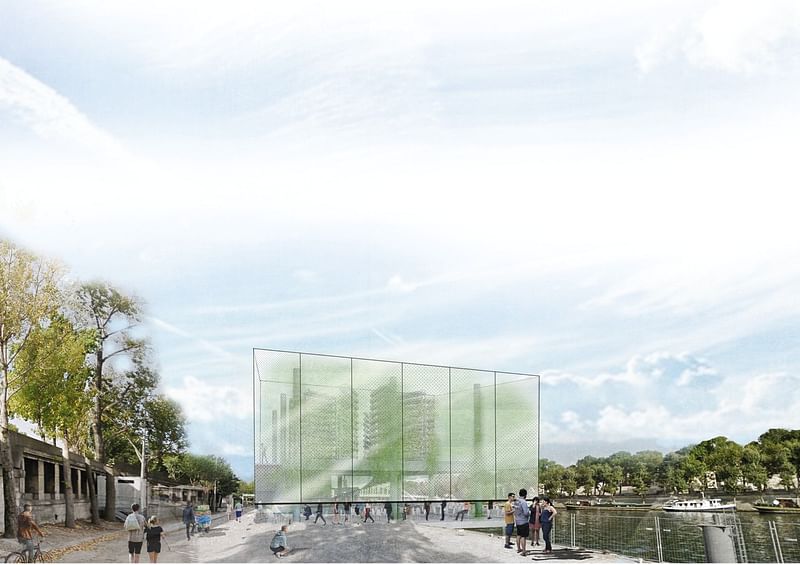

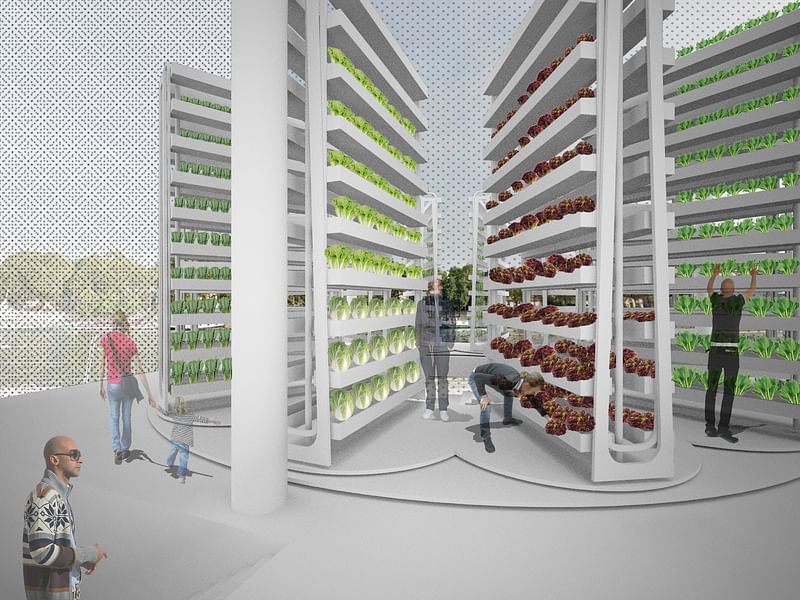
Project description: “Restaurant revolution starts due to climate change.
BE MINDFUL OF OUR FOOD AND THE ENVIRONMENT: The food industry behind restaurants counts for a large portion of the global ecological footprint: traditional agriculture, transportation and restaurants themselves. Yet, a huge amount of food is wasted every day. It’s time to change. We need a sustainable model.
FARM + RESTAURANT RIVER NETWORK: The restaurant is not merely a place to eat, but also where your food is farmed, cooked and presented to you. Growing along a river, the network of farm-restaurant produces regional food and provides farm-to-table dining experience to the diners. Dining becomes an experience to see, to touch, to smell, to taste and to farm - a sensory journey to learn about your food. The collaboration within the network ensures the diversity of food product they share, at the same time allows every farm-restaurant to optimise the environment for an individual product. Vegetation can be lettuce, potato, tomato, eggplant, etc.
Lettuce-go-round is composed of a place for farming and a place for dining. The building integrated photovoltaic (BIPV) operable glass facades allow natural light to penetrate deep inside, providing solar energy to the vertical farm. The central stack enhances air movement and facilitates cross ventilation.
SUSTAINABLE FOOD PRODUCTION: Innovative technology allows such system to produce quality food more efficiently than traditional agriculture, diminishing the carbon footprint for food transportation.
Aeroponics planting system is embedded into the 6-meter tall racks. Each of them provides 2 days of supplies. The staff cycle through the rack to harvest and replant the product. The racks revolve at a 12-hour cycle to provide shading to regulate the interior temperature. Each of them also rotates in a 60 minutes cycle to optimise sun exposure and ventilation.
TIME TO FARM, FARM-TO-DINE.”
3rd place: “Dreamer's Restaurant” by MINH PHUC NGUYEN, LINH PHUONG PHAN, SON CONG TRINH (Vietnam)
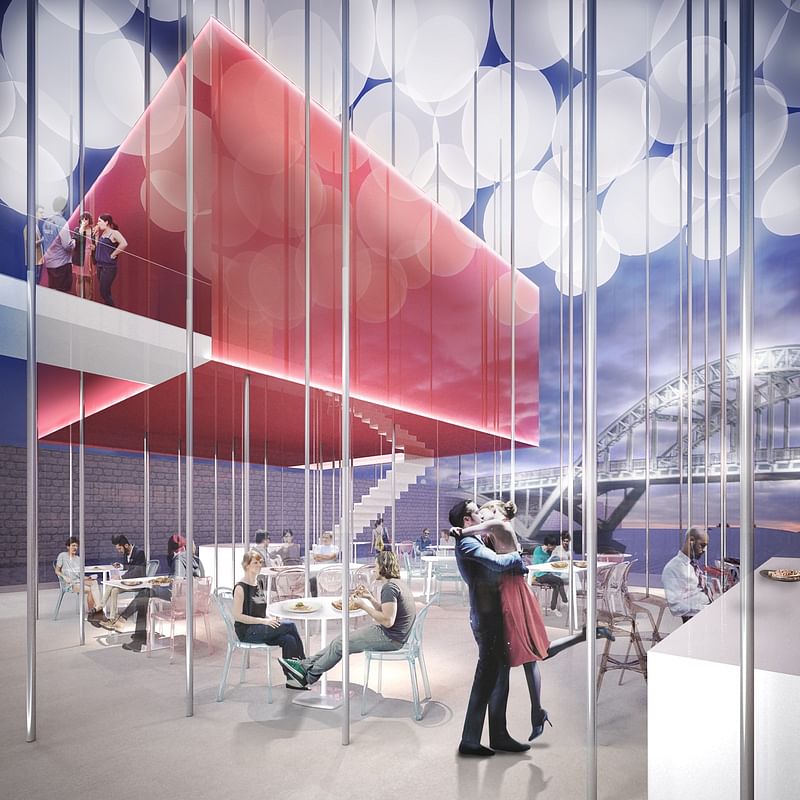
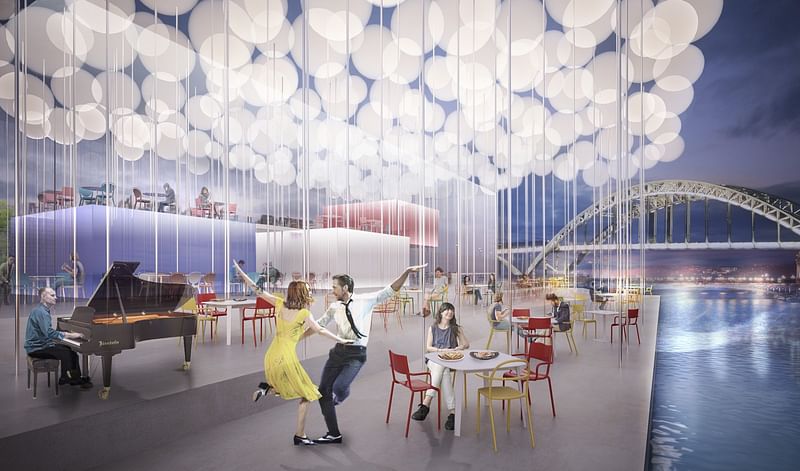

Project description (excerpt): “THE IDEA: Paris is known as a city of emotion, a thriving blend of arts, literature, romance, cuisine and above all dreams. Taste is intricately bound in memories, we want to create a noticeable destination upon the River Seine, an exploration of cuisine through the imagery of a cloud as a poetic symbol of Parisian dreamers, suspended in the sky. An ambiguous space accentuated by the pursuit of minimalistic and honest design, contrasting with the surrounding urban fabric. Thereby, encouraging interaction between diners and observers from the outside and by erasing boundaries we maintain the poignant atmosphere of being beside the Seine.
- Our concept is derived from French dining culture - simple planes and the outdoors.
-The kitchen, service and private dining box are outlined in one way vision and switchable glass allowing an electric mix of colours, playing on visibility.
- Elevating the private dining box outlines the reception below.
- THE LANDSCAPE IS THE HEART OF THE RESTAURANT. The stepping floors allow for uninterrupted views to the river for all. DISABLED PEOPLE CAN MOVE EASILY.
-The kitchen is the CENTER of the restaurant, switchable glass draws the attention of diners to cooking processes. A theatrical ‘show’ controlled by the chefs.
-Space is demarcated by thin steel columns supporting the building and ETFE ‘cloud’.
-Naked glass box encloses the entirety protecting against the elements, also erasing interior/exterior boundaries.
-Internally lit ETFE balloons control solar gain whilst maximizing translucency to the sky. The energy efficient balloons harvest rainwater for use in the restaurant services; a ‘cloud’ which produces rain.
- One-way vision glass”
For more about the winning ideas, click here. You can check out all the Honorable Mentions here.

Share
0 Comments
Comment as :